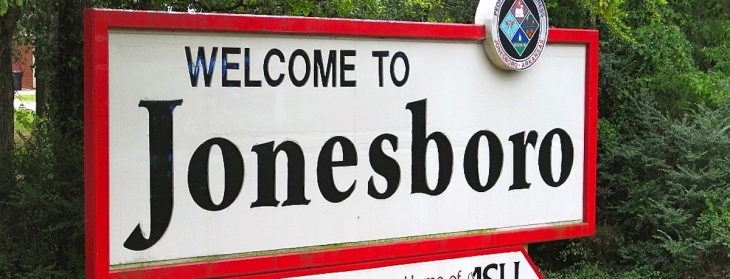Jonesboro develops the second land bank in Arkansas
by July 18, 2018 4:52 pm 1,167 views

The city of Jonesboro is developing another tool to combat poverty and blight in specific parts of Northeast Arkansas’s largest city. Jonesboro land bank manager Johnathan Smith told members of the Jonesboro Kiwanis Club on Wednesday the city is trying to identify a “revitalization zone,” which will serve as the focal point for land bank efforts.
The goal is to improve home ownership rates, increase property values, decrease crime, and put vacant properties back on the city’s tax rolls, he said. There are 170 land banks in the U.S., and before the city of Jonesboro formed a land bank in December 2017, Little Rock had the only land bank in Arkansas. Each year the property parcels are donated to the city and this effort will be an organized effort to improve the city’s economy, he said.
“We need to turn the tide … we need to address these poverty issues,” he said.
Jonesboro has a population of about 76,000 residents, a 12.5% increase from 2010. About one in three Jonesboro residents live at or below the national poverty rate, according to the U.S. Census Bureau. An obvious revitalization zone would likely be in northern Jonesboro, Smith said. City officials have been analyzing income maps for the entire city that cover several years and reveal trends that need to be understood, Smith said. During the last five years income levels in the northern section of the city have declined.
In addition to a zone, the city needs a robust inventory of properties, Smith said. Each year properties are donated to the city, and the city buys properties. Some can be used for residential purposes, while others could be designated for public use, like a community garden, or could be used for a business. A land bank is unique as compared to other governmental entities because it doesn’t have to take the highest price offered for a property. Outcomes are the most important element in these developments, he added.
Acquired properties will be assessed. Those assessments will include the surrounding neighborhoods, environmental factors, its zoning, and other potential issues. A plan of action will be developed, and the property will be improved to allow it to be sold to an individual or a developer. Sometimes the property could be given away for free or at a reduced rate. All properties in the program will have deed and covenant restrictions, meaning the property has to be used for the purpose outlined before its sold or given away.
For example, if a developer gets several city owned parcels and promises to build single family homes on those properties, the developer will be required to stick with plans submitted to the city. If not, the property could be reacquired by the land bank.
Another element will be public-private partnerships. Business and developers will be able to partner with the land bank to develop parts of the city, he said. Smith recently acquired his real estate license, and he said this project is vital to combat poverty in the city. A person who might normally pay $20,000 for a developed lot, might only pay $5,000 through the land bank, he said.
Neighborhood development and plans will be key for the city moving forward, Smith said. There are only a handful of neighborhood developments in Jonesboro that have long-range plans on the books with the city. When a resident buys a house there should be information available about the long-term plans for that neighborhood, he added.
The land bank has one ultimate goal from a city perspective.
“We want to get these vacant parcels back on the tax rolls,” Smith said.
